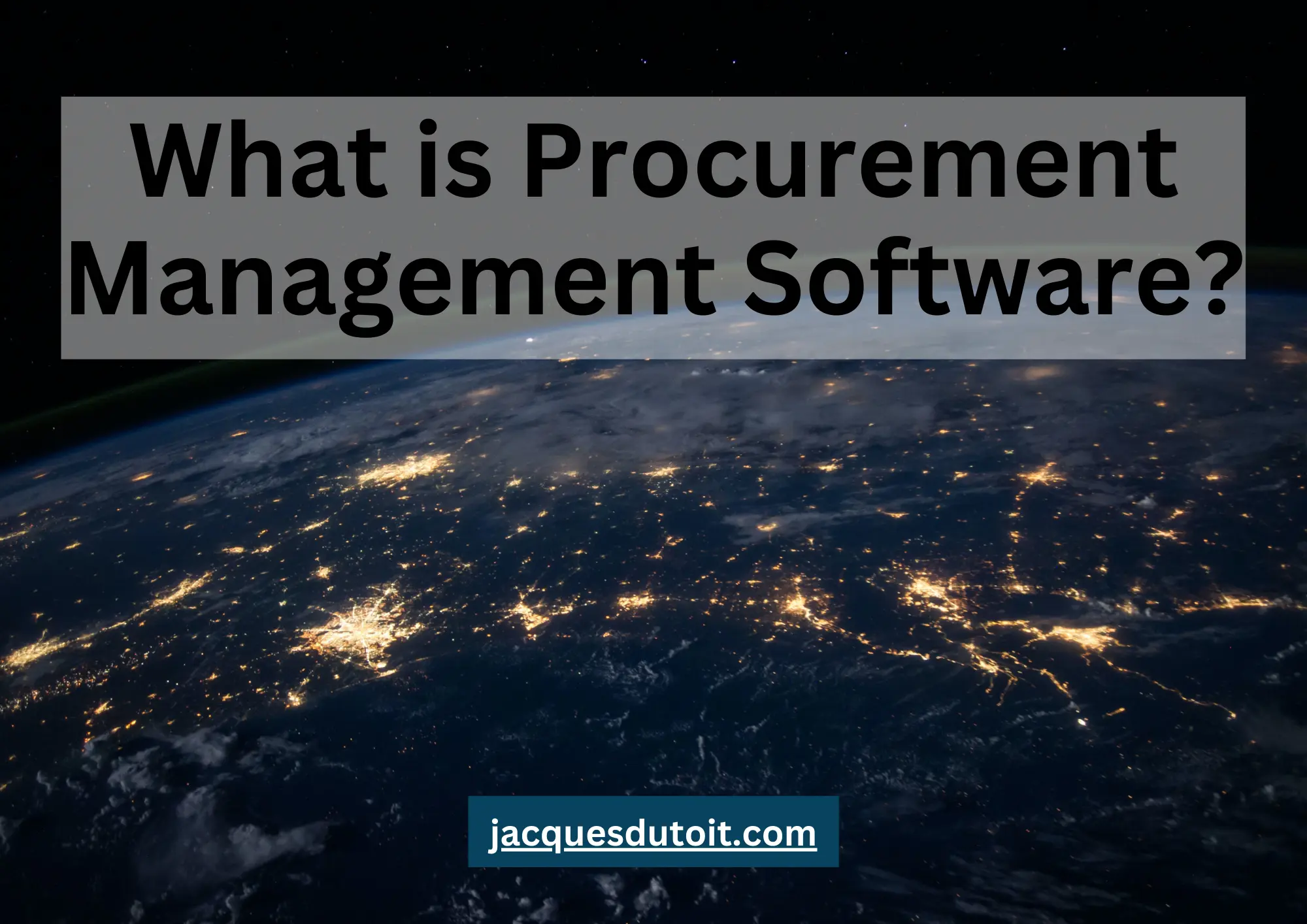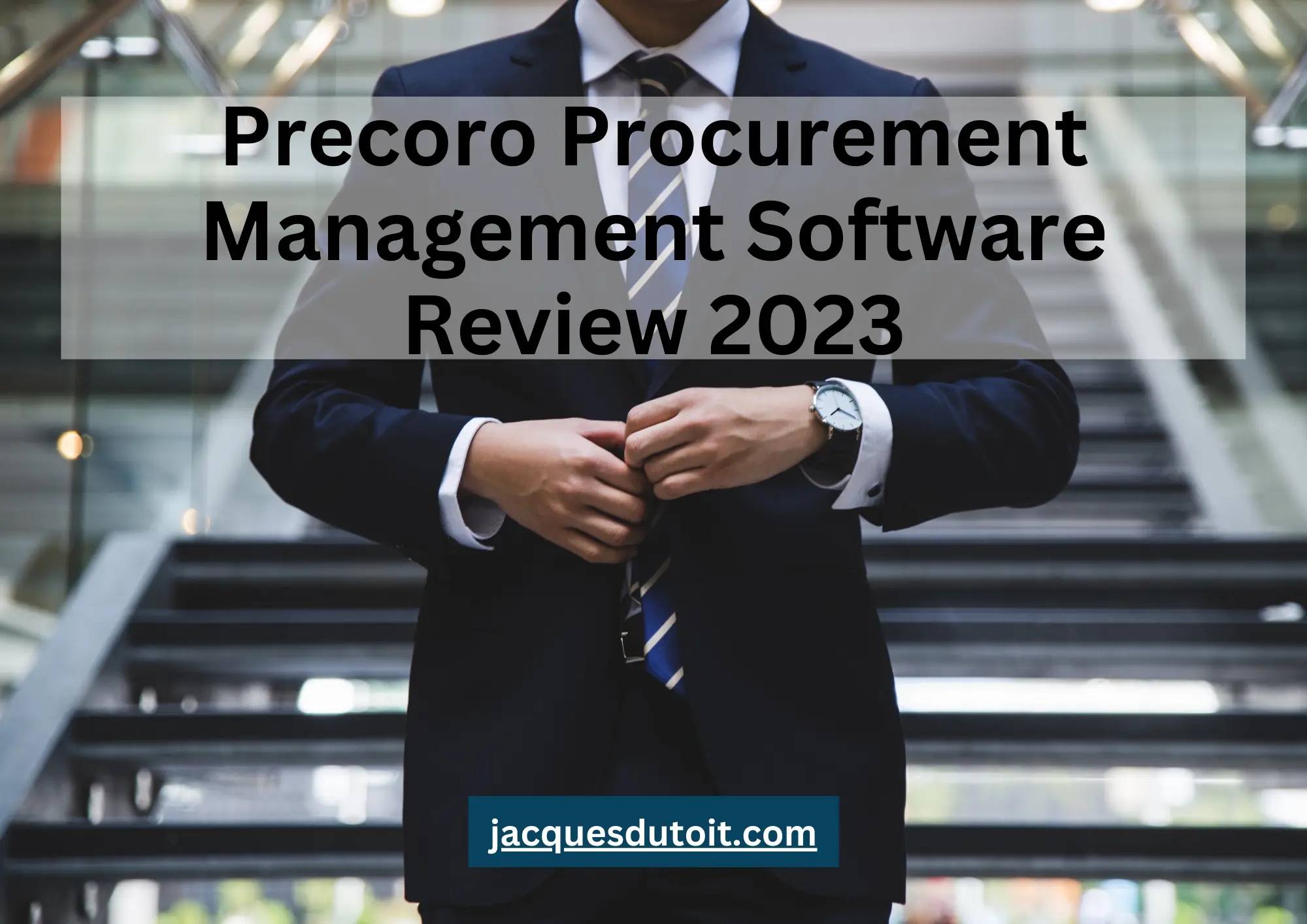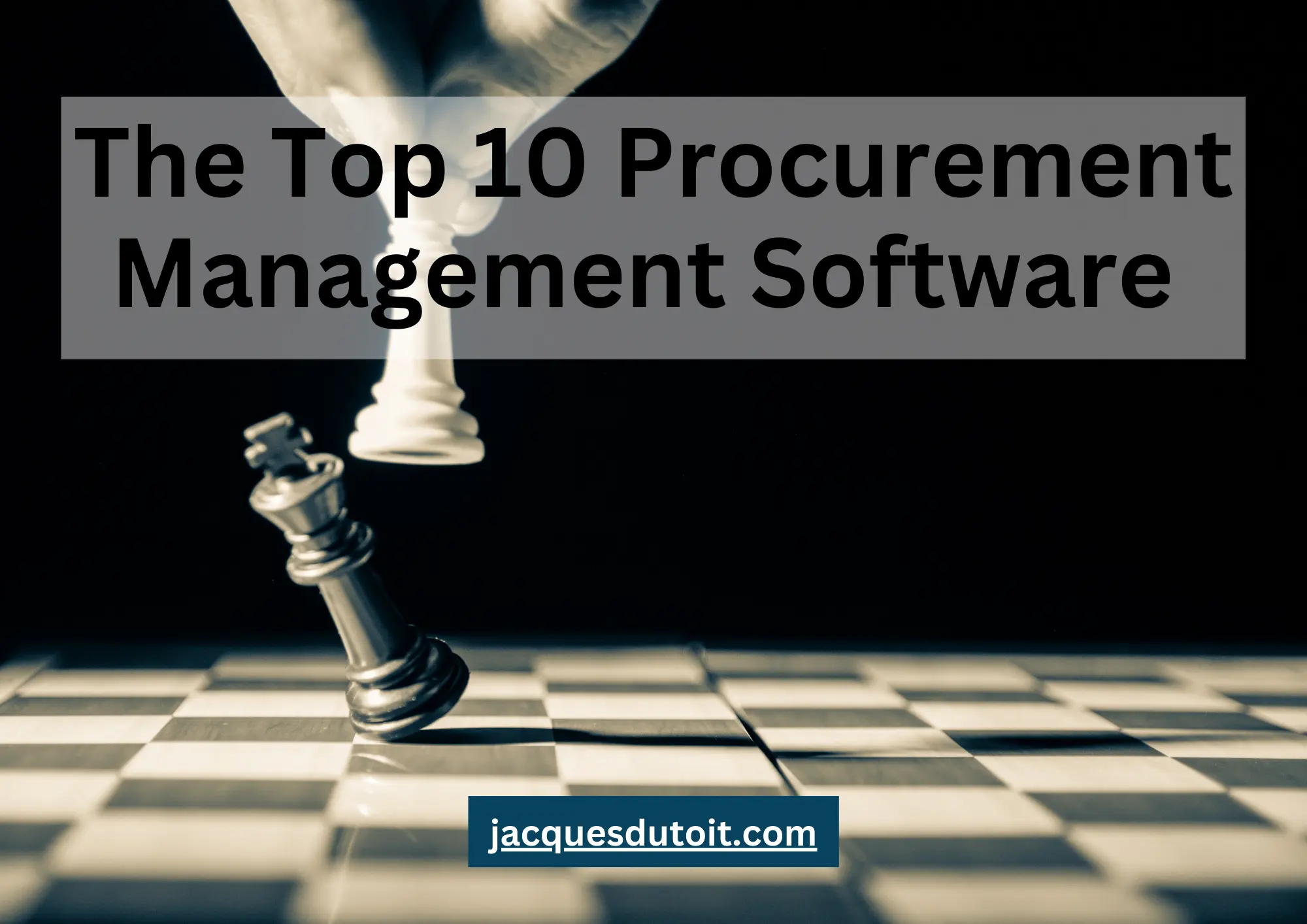In today’s competitive business landscape, streamlining procurement processes is crucial for organizations looking to stay ahead. Enter “what is procurement management software?” a comprehensive solution that brings efficiency and cost savings to the procurement process. But what exactly does this term mean? And what benefits does it offer? This blog post will explore the ins and outs of what procurement management software is, its essential features, and how to select the right solution for your business.
P.S. Want to know when my next article lands? Sign up below.
Short Summary
- Procurement management software is a comprehensive solution that automates procurement tasks for cost savings, improved supplier relationships and enhanced spend visibility.
- It consists of guided buying systems, supplier relationship management, contract management and budget control to streamline internal processes.
- Benefits include time & cost savings, better supplier relationships & increased spend visibility through AI analytics integration with other systems and mobile access.
Understanding Procurement Management Software

Procurement management software is a comprehensive solution designed to optimize the procurement process, from purchase orders to invoicing. It encompasses key procurement function components such as spend analytics, supplier relationship management, contract management, and inventory control, making it an invaluable tool for procurement teams. By automating procurement tasks, this software saves time and money, improves supplier relationships, and enhances spend visibility.
Let’s delve deeper into the key components and workings of procurement management software.
Key Components
Procurement management software, often referred to as eProcurement software, is an invaluable tool when it comes to streamlining the procure-to-pay (p2p) process. It covers all associated tasks from requisitions and purchasing to accounts payable. Its essential elements include guided buying systems, supplier relationship management, and contract management, ensuring a sustainable supply chain management throughout.
Budget control is another crucial aspect of procurement software, as it ensures the profitability of the business. Spend analytics software, a vital component, provides insights into purchasing behavior, enabling organizations to streamline internal processes and maximize cost savings.
How It Works

At its core, procurement management software automates purchasing tasks, reducing manual efforts and errors. It integrates data from different functional areas, ensuring seamless continuity of information throughout the entire procurement process. Supplier usability is also an important consideration when evaluating procurement systems, as it impacts their ability to manage multiple customer needs and modify online catalogs efficiently.
A straightforward user interface is vital in procurement management software, as it allows for quicker adoption at all employee levels and ensures a seamless transition that does not impede productivity.
In the next section, we will explore the advantages of using procurement management software.
Advantages of Using Procurement Management Software

Procurement management software offers a plethora of benefits for organizations, including time and cost savings, improved supplier relationships, enhanced spend visibility, and more.
In the following subsections, we will detail each of these advantages and explain how they contribute to overall business efficiency.
Time and Cost Savings
Procurement management software helps to significantly reduce labor and costs. It eliminates human errors and the need for disparate systems like accounting, purchase requisition, form generators and finance to be connected. Time savings are achieved by automating time-intensive tasks, streamlining processes, and optimizing purchase orders for increased revenue.
Moreover, procurement management software offers automated purchase orders, significantly shortening the lifecycle times for purchase orders, invoice processing, and payment processing. This not only saves time, but also minimizes monetary losses caused by human errors.
Improved Supplier Relationships
Supplier relationships are of paramount importance to a successful procurement operation. Procurement management software allows organizations to examine vendor relationships, identifying the most suitable prices for required items without compromising quality. Accurate data provides leverage for negotiations, leading to better contracts and early payment discounts.
Utilizing a guided buying system can help companies save money by prompting users to purchase only pre-approved items with contracted terms, discouraging unauthorized spending while ensuring reasonable prices and consistent quality.
Enhanced Spend Visibility
Enhanced spend visibility, enabled by procurement management software, allows organizations to analyze expenditure data and optimize procurement spending. Data analysis provides the potential to decrease costs, consistently enhance and refine procurement operations, and plan strategically for the future.
Mobile access is another significant aspect of the procurement automation software, as it allows users to access the system from any device, including mobile phones. This flexibility and efficiency enable organizations to approve purchases and manage their procurement activities on the go.
Essential Features of Procurement Management Software

The essential features of procurement management software include automated purchase orders, contract management, and inventory control.
In the following subsections, we will delve into each of these features and explain their significance in streamlining the procurement process.
Automated Purchase Orders
Automated purchase orders in procurement management software streamline the procurement department and accounts payable process, allowing organizations to allocate resources to more impactful tasks. This feature automates the generation, approval, and transmission of purchase orders to suppliers, optimizing the procurement process and eliminating errors and costs.
Moreover, automated purchase orders expedite the approval process for purchases, ensuring a smoother and more efficient procurement experience.
Watch this video by Precoro on Purchase Order Management | The Basics.
Contract Management
Contract management in procurement management software involves tracking and managing contracts, negotiating terms and conditions, and monitoring the flow of goods and services within the company. This feature may include redlining (legal revisions with tracking) and electronic signature or simply the storage of terms and expiration for central management and enforcement over the agreement’s duration.
Effective contract management allows for better decision-making and improved supplier relationships.
Inventory Control
Inventory control in procurement management software automates inventory management tasks, like tracking inventory levels, orders, sales, and deliveries. This feature also assists in setting inventory levels and generating purchase orders when inventory is depleted.
By utilizing their procurement management systems and software for inventory control, businesses can reduce time and costs, enhance supplier relationships, and gain greater insight into their expenditure.
Budgeting
Procurement management software often includes several key budgeting features to help manage and control costs in an organization.
- Budget Tracking and Monitoring: The software provides real-time tracking of expenses against budget, making it easier to monitor and control costs. Alerts can be set up to warn when expenses are nearing or have exceeded the budget, allowing timely corrective action.
- Budget Allocation: The software allows for the allocation of budgets to different departments, projects, or cost centers. This feature is helpful for decentralizing procurement decisions while still maintaining control over total spend.
- Spend Analysis: Procurement software can analyze and report on spending trends, categories of spend, and supplier performance. This feature provides valuable insights for making strategic budgeting decisions.
- Cost Forecasting: Some software offers cost forecasting capabilities, using historical data to predict future costs. This feature can support budget planning and help organizations to prepare for future expenses.
- Purchase Order Management: The software often includes tools for creating and managing purchase orders, which helps ensure that purchases are made within budget and approved according to company policies.
- Contract Management: Procurement software often includes contract management features, which can help manage and control contractual spending. This feature allows for visibility into contract terms and conditions, which can lead to improved budgeting and cost management.
- Approval Workflows: The software can enforce approval workflows for purchases above a certain amount, ensuring budget adherence and preventing overspending.
These features together help organizations to maintain control over their spending, make informed budgeting decisions, and ultimately achieve better financial efficiency. It’s important to note that features can vary between different procurement software, so it’s crucial to select a tool that best fits an organization’s specific budgeting and procurement needs.
Advanced Functionality to Consider

When selecting procurement management software, it’s important to consider advanced functionality such as AI-powered analytics, integration with other systems, and mobile access.
In the following subsections, we will explore these functionalities and their benefits for businesses looking to optimize their procurement processes.
AI-Powered Analytics
AI-powered analytics is a cutting-edge feature that allows organizations to analyze large volumes of data and gain insights that can assist with decision-making regarding expenditure, suppliers, and risks. By incorporating AI-powered analytics into procurement management software, businesses can streamline their procurement processes, minimize costs, and strengthen supplier relationships.
Examples of AI-powered analytics applications in procurement management software include: spend management and analysis, contract management, and strategic sourcing.
Integration with Other Systems
Integration with other systems is a vital aspect of procurement management software, as it enables the exchange of data and information between different systems, streamlining processes and enhancing efficiency. Procurement management software can integrate with other systems through APIs and middleware, as well as back-end ERP systems, accounting software, and other business systems.
Seamless integration ensures optimal utilization of the procurement management software, ultimately leading to better overall business performance.
Mobile Access

Mobile access is an essential feature of procurement management software, allowing users to access the system from any device, including smartphones and tablets. This flexibility enables organizations to manage their procurement activities on the go, ensuring that they can approve purchases, track inventory levels, and monitor supplier performance from anywhere at any time.
By incorporating mobile access into procurement management software, businesses can improve their overall efficiency and productivity.
Selecting the Right Procurement Management Software
Selecting the right procurement management software for your organization requires a careful assessment of your needs and a thorough comparison of vendors and solutions.
In the following subsections, we’ll provide guidance on how to assess your needs and compare different vendors and solutions to help you find the perfect fit for your procurement process.
Assessing Your Needs
When selecting procurement management software, it’s essential to conduct a thorough needs assessment to ensure the chosen solution meets your organization and procurement team’s specific requirements. Consider factors such as your industry, the size of your organization, and the complexity of your procurement processes.
It’s also important to prioritize capabilities that need to be mastered first, such as budget tracking, expense management, and vendor management. By carefully assessing your needs, you’ll be better equipped to select a procurement management software solution that aligns with your organization’s goals and objectives.
Comparing Vendors and Solutions
When comparing procurement management software vendors and solutions, it’s crucial to consider key features such as budget tracking, expense management, vendor management, audit logs, analysis, reporting, and integration capabilities. Additionally, take into account the cost of the software, the customer service and support offered, and the ease of use.
Don’t forget to evaluate the vendor’s reputation and track record in the industry, as well as their ability to meet your organization’s specific needs and requirements. By thoroughly comparing different vendors and solutions, you’ll be able to select the procurement management software that best aligns with your organization’s objectives and guarantees a smooth and efficient procurement process.
Implementation Best Practices
Implementing procurement management software successfully requires adherence to best practices, such as providing adequate training and support, and striving for continuous improvement.
In the following subsections, we’ll discuss these best practices in more detail, offering guidance on how to ensure a smooth and successful implementation process for your procurement management software.
Training and Support
Providing effective training and support is crucial during the implementation of procurement management software, as it ensures a speedy understanding of the system and allows for more effortless attainment of procurement objectives. To guarantee successful training and support, develop a training plan, provide resources such as tutorials and videos, and offer continuous support through a help desk or other customer service channels.
By ensuring adequate training and ongoing support for employees, your organization and procurement managers can maximize the benefits of procurement management software and optimize the procurement process.
Continuous Improvement
Continuous improvement is key to ensuring the long-term success of your procurement management software implementation. Techniques such as Kaizen, Six Sigma, Lean management, and Lean Six Sigma can be employed to continually enhance robust procurement management software processes and systems.
In addition, establishing a feedback system and involving all employees in the improvement process can help ensure that any difficulties or issues are identified and addressed promptly. By focusing on continuous improvement, your organization can maintain an efficient and effective procurement process, maximizing the benefits of your procurement management software.
To further clarify the topic of procurement management software, let’s address some frequently asked questions.
Procurement Management Software FAQs
What is a procurement management software?
Procurement management software helps companies streamline their purchasing processes and secure the best prices for products and services. It allows users to create approved supplier lists, generate purchase orders, approve purchase requisitions themselves, and track deliveries.
The software also assists with inventory management and vendor evaluation.
What is the purpose of procurement management system?
The purpose of a procurement management system is to provide an efficient and effective way for organizations to identify, select, purchase and manage the best suppliers and materials. It enables organizations to ensure their operations and purchasing process are cost-effective, compliant and transparent while driving more value from their supplier network.
Which procurement software is best?
It’s difficult to determine which procurement system or software is the best option, as it will ultimately depend on individual needs. However, based on the advice of experts, it appears that the best option is to research and compare features in order to find the right product for your particular situation.
What deployment methods are available for procurement management software?
The two deployment methods available for procurement management software are cloud-based and on-premise solutions.
Conclusion

In conclusion, procurement management software has become an indispensable resource for organizations seeking to boost their efficiency and remain competitive in an increasingly complex global economy. This software offers an extensive suite of benefits including task automation, purchase order optimization, and advanced analytics, all of which contribute significantly to an organization’s bottom line. Furthermore, the potential for time and cost savings, improved supplier relationships, and increased spend visibility serves to underscore its value.
As the worldwide economy evolves, maintaining agility is essential for businesses. Implementing the right procurement management software is a decisive step toward this goal. By grasping its key components and features, selecting an appropriate solution that aligns with an organization’s unique requirements, and adhering to implementation best practices, the procurement process can be optimized, driving overall business efficiency. The decision to adopt procurement management software, therefore, is not just a strategic move – it’s a vital measure for organizations aiming to thrive amid the ever-intensifying demands of the global economic landscape.
Also read
The 2023 Financial Crisis is here. Be prepared.
How to Start an Airbnb Business in 5 Easy Steps — The Definitive Guide
P.S. Want to know when my next article lands? Sign up below.








